My Books & References

 |
Amazon | France | USA |
 |
Eyrolles Editions | France | |
 |
O'Reilly Editions | France | USA |
 |
Vuibert Editions | France |
Pocket References & Guides |
|||
 |
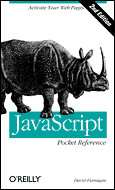 |
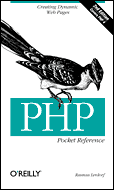 |
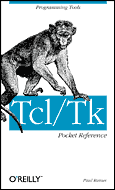 |
|
An indispensable reference for web designers, authors and programmers, this concise guide to every HTML tag has been brought up-to-date with the current HTML specification (4.01). Each tag entry includes detailed information on the tag's attributes and support information for the latest web browsers -- Netscape 6, IE 6, and Opera 5. Author Jennifer Niederst provides context for the tags, indicating which are grouped together, and offers bare-bones examples of how standard web page elements are constructed. |
The JavaScript Pocket Reference, 2nd Edition provides a complete overview of the core JavaScript language and client-side scripting environment, as well as quick-reference material on core and client-side objects, methods, and properties. The new edition has been revised to cover JavaScript 1.5, and is particularly useful for developers working with the latest standards-compliant web browsers, such as Internet Explorer 6, Netscape 7, and Mozilla. |
Simple, to the point, and compact, the second edition of PHP Pocket Reference is thoroughly updated to include the specifics of PHP 4, the language's latest version. It is both a handy introduction to PHP syntax and structure, and a quick reference to the vast array of functions provided by PHP. The quick reference section organizes all the core functions of PHP alphabetically so you can find what you need easily. |
A companion volume to Tcl/Tk in a Nutshell, the Tcl/Tk Pocket Reference is a handy reference guide to the basic Tcl language elements, Tcl and Tk commands, and Tk widgets. It provides easy access to just what you need and includes easy-to-understand summaries of Tcl/Tk language elements. Covers Tcl Version 8 and Tk Version 8. |

Précis de génie logiciel
Bruno Marre, Marie-Claude Gaudel, Francoise Schlienger, Gilles Bernot
ISBN: 2-225-85189-1
Un logiciel est un produit complexe et difficile à réaliser. En effet, l'écriture d' "un petit utilitaire maison" qui répond à des besoins précis mais qui souvent fait appel à une connaissance implicite de l'utilisateur, ne nécessite pas la même organisation matérielle et intellectuelle que là conception et la réalisation d'un logiciel professionnel : un programme comportant plusieurs dizaines, voire centaines de milliers de lignes ne s'improvise pas. Cependant, disposer des moyens matèriels et humains ne suffit pas. Une Méthode est indispensable. Le software engineering ou génie logiciel a été défini en 1968, sous le parrainage de l'OTAN, par un groupe de scientifiques cherchant à résoudre le problème des logiciels d'alors: le logiciel n'est pas fiable et il est incroyablement difficile de réaliser dans les délais prévus des logiciels satisfaisant leurs cahiers de charges. Ainsi le génie logiciel a-t-il pour objectif de spécifier, de concevoir, de réaliser et de faire évoluer, avec des moyens et dans des délais raisonnables, des programmes, des documentations et des procédures de qualité en vue d'utiliser un ordinateur pour résoudre certains problèmes. Ce livre propose un panorama des méthodes utilisées en génie logiciel. Il expose, pour chaque étape de la vie d'un logiciel, les modèles reconnus et appliqués aujourd'hui. Ecrit avec un réel souci pédagogique, cet ouvrage est concis et permettra au lecteur une entrée en matière immédiate. Il s'adresse aux étudiants en informatique (licence, maîtrise, MIAGE, DEA, DESS, élèves-ingénieurs) ainsi qu'aux enseignants-chercheurs. Il intéressera aussi les informaticiens en poste (programmeurs, développeurs, chefs de projet).

Les Réseaux, édition 2003
Guy Pujolle
ISBN: 2-212-11086-3
Considéré par les professionnels comme un classique de la littérature informatique, Les réseaux est un ouvrage de référence. Il rend compte de la fusion entre les technologies réseaux et télécoms. Guy Pujolle présente les technologies modernes (communication, IP, Ethernet, Frame Relay, ADSL...), les liaisons sans fil et par réseaux de mobiles (GSM, GPRS et UMTS) et de satellites. Il se penche également sur la question de la sécurité, la qualité de service, les agents intelligents, le multimédia, l'administration de réseaux et les grandes tendances des évolutions attendues pour les années 2001-2005. Enfin l'ouvrage est assorti d'un ensemble complet d'annexes techniques. Il s'adresse aux étudiants en réseaux et télécoms, aux chefs de projets, aux consultants, aux ingénieurs et techniciens réseaux et télécoms.

Réseaux de mobiles et réseaux sans fil
Khaldoun Al Agha, Guy Pujolle, Guillaume Vivier
ISBN: 2-212-11018-9
Les réseaux mobiles vont supplanter progressivement les réseaux filaires. Pour cette raison,
et puisque c'est un domaine nouveau, le sujet mérite sa bible de référence. Les lecteurs la
trouveront dans cet ouvrage qui couvre plusieurs technologies, différentes de prime abord, mais
qui reposent finalement sur des techniques issues du monde Ip (Internet Protocol).
L'architecture des réseaux mobiles une fois dressée dans la première partie, les auteurs se
lancent, au cours des parties II à IV, dans un descriptif des différents systèmes existants:
au niveau européen (GSM, GPRS ou UMTS), l'ethernet mobile (standard Bluetooth, les réseaux locaux
sans fil IEEE 802.11 et HiperLAN) ou encore les systèmes américains de deuxième génération comme
l'IS95 (Interim Standard 95) et de troisième génération avec le CDMA 2000. Cette immersion dans
l'ensemble des facettes de la galaxie des réseaux mobiles étant réalisée, le livre présente
l'utilisation des ondes radio dans ce contexte, avant de détailler les particularités de la
gestion de la mobilité grâce au protocole IP. Les applications associant des serveurs et des
équipements terminaux de type Wap, SMS et le passage au haut débit sont abordés dans la septième
partie. Ce panorama s'achève par la présentation des perspectives d'évolution et une brève
introduction aux systèmes du futur avec la technologie 4 G (haut débit et IP Mobile).

Les Réseaux
Guy Pujolle
ISBN: 2-212-11121-5
Avec plus de 75000 exemplaires vendus, Les Réseaux de Guy Pujolle s'est imposé comme la référence
en langue française auprès des étudiants comme des professionnels en réseaux et télécoms.
En prise sur l'évolution du marché, l'ouvrage rend compte de la convergence aujourd'hui presque
complète entre les technologies réseaux et télécoms, avec la domination d'Ethernet et d'IP,
la maturation des technologies xDSL, l'essor de MPLS, l'émergence des réseaux de mobiles de 3e
génération et des technologies sans fil, l'enjeu de la qualité de service et de la sécurité, etc.
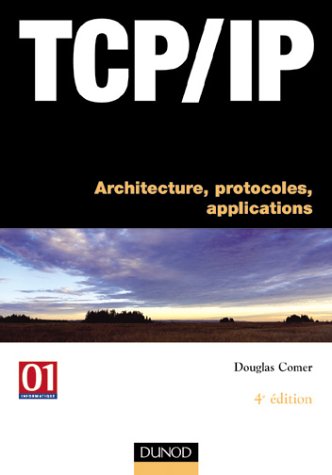
TCP/IP, Architecture, Protocoles, Applications
Douglas E. Comer
ISBN: 2-10-008181-0
TCP/IP Transmission Control Protocol / Internet Protocol c’est tout simplement le protocole
technique sur lequel repose toutes les communications Internet.
A la fois support de cours et ouvrage de référence le “Comer” aidera le professionnel comme
l’étudiant à connaître les arcanes de TCP/IP ainsi qu’à maîtriser
la conception l’administration et l’utilisation d’Internet ou d’intranets.
Cette quatrième édition a été profondément remaniée plus d’un
tiers des pages de la troisième édition ont été modifiées et
complétée par quatre nouveaux chapitres.
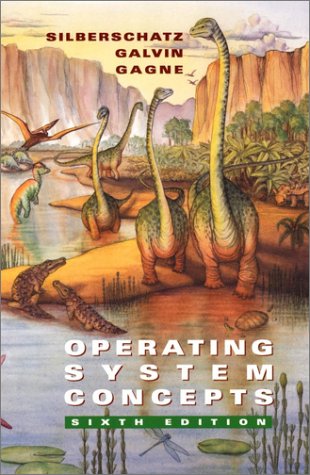
Operating System Concepts
Abraham Silberschatz, Greg Gagne, Peter Baer Galvin
ISBN: 0-47-125060-0
Operating systems are large and complex, and yet must function with near-absolute reliability--
that's why they're a class unto themselves in the field of software development. Since its first
release 20 years ago, "the dinosaur book" --Operating System Concepts by Abraham
Silberschatz, Peter Baer Galvin, and Greg Gagne--has been a valuable reference for designers
and implementers of operating systems. The newly released sixth edition of this book maintains
the volume's authority with new sections on thread management, distributed processes, and
the Java Virtual Machine (JVM). There's also information on the workings of the latest crop of
operating systems, including Microsoft Windows 2000, Linux, FreeBSD, and compact operating
systems for handheld devices.
This book is concerned with the design of operating systems, which is to say it enumerates
the problems that pop up in the creation of efficient systems and explores alternative ways of
dealing with them, detailing the advantages and shortcomings of each. For example, in their
chapter on scheduling CPU activity, the authors explain several algorithms (first-come, first-served,
and round-robin scheduling, among others) for allocating the capacity of single and multiple
processors among jobs. They highlight the relative advantages of each, and explain how several
real-life operating systems solve the problem. They then present the reader with exercises
(this book is essentially a university textbook) that inspire thought and discussion.
--David Wall
Topics covered: The problems faced by designers of system software for electronic
computers, and strategies that have been developed over the past 20 years to address (and,
in some cases, solve) them. Problems of CPU scheduling, memory allocation, paging, processes
and threads, storage management, distributed processes and storage mechanisms, and security
are all discussed thoroughly and with many authoritative references.
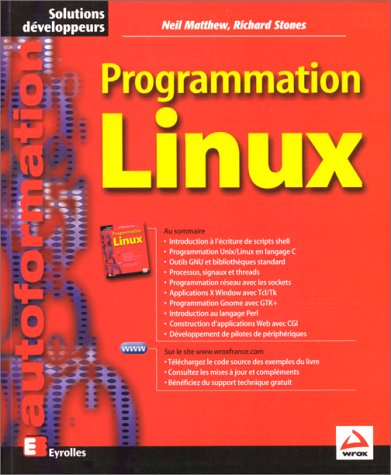
Programmation Linux
Neil Matthew, Richard Stones
ISBN: 2-212-09129-X
A vos claviers ! Grâce à une bonne structuration et une approche éprouvée, cet ouvrage permet
de développer aisément des programmes pour Linux et autres systèmes d'exploitation UNIX. Il
présente de manière concise les bibliothèques C UNIX standard, les langages de développement
comme le shell, Tcl et Perl et les interfaces utilisateurs graphiques destinées au système
X Windows (Tk pour X et GTK+ pour GNOME). L'auteur expose largement la programmation C dans
toutes ses fonctionnalités et ses aspects les plus avancés comme les séquences de contrôle
threads. Il étudie également des applications Internet avec le HTLM puis avec les CGI. En même
temps que la théorie, chaque description est accompagnée d'exemples appropriés permettant de
mesurer la validité de ces programmes.
Programmation Linux s'adresse aux utilisateurs Linux, aux administrateurs systèmes UNIX ou Linux,
aux programmeurs et aux étudiants en informatique. Il suppose une certaine connaissance du
système Unix et du langage C ou C++.
Au sommaire : Pour commencer. Programmation shell. Travailler avec les fichiers. L'environnement
UNIX. Les terminaux. Curses. Gestion des données. Outils de développement. Débogage.
Processus et signaux. Les threads POSIX. Communication inter-processus - les tubes. Sémaphores,
mémoire partagée et messages. Les sockets. Tcl. Programmation pour X. Programmer GNOME à l'aide
de GTK+. Le langage de programmation Perl. Internet, le HTML. Internet, les CGI. Pilotes de
périphériques. --M. Methenni
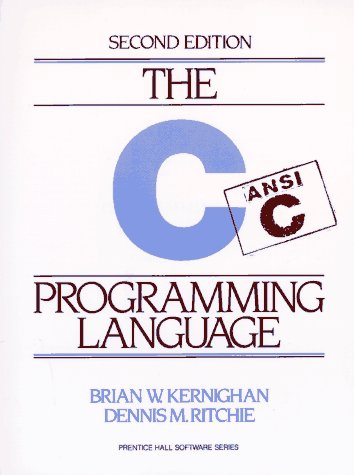
The C programming language
Brian W. Kernighan, Dennis M. Ritchie
ISBN: 0-13-110362-8
Just about every C programmer I respect learned C from this book. Unlike many of the 1,000
page doorstops stuffed with CD-ROMs that have become popular, this volume is concise and
powerful (if somewhat dangerous) -- like C itself. And it was written by Kernighan himself.
Need we say more?
Book Description
This second editon describes C as defined by the ANSI standard. This book is meant to help
the reader learn how to program in C. The book assumes some familiarity with basic programming
concepts like variables, assignment statements, loops, and functions. A novice programmer should
be able to read along and pick up the language.
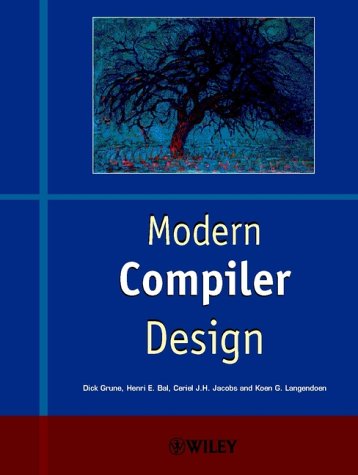
Modern compiler design
Dick Grune
ISBN: 0-471-97697-0
Covers compilation techniques for imperative, object-oriented, functional, logic, and
distributed languages. Emphasis is on implementation and optimization techniques, including
tools for automating compiler design. Early chapters are concerned with techniques for
programming processes in general, and include discussion of memory management, both in the
compiler and in the generated code. Later chapters cover specific techniques required by
various programing paradigms. Includes chapter summaries and exercises. Grune is affiliated
with Vrije University, Amsterdam.
Book Description
A compiler is one of the most vital parts of a computers system software, translating programs
written in a high-level language into low-level commands that the machine can understand and
execute. Most compiler design books focus only on techniques for imperative (or procedural)
languages like C or Pascal, whereas Modern Compiler Design also covers compilation techniques for
object-oriented, functional, logic and distributed languages.
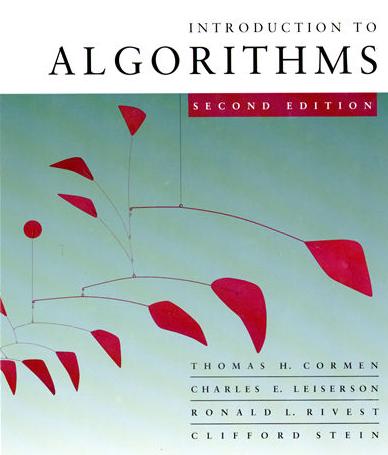
Introduction to Algorithms
Thomas Cormen, Charles Leiserson, Ronald Rivest, Clifford Stein
ISBN: 0-07-013151-1, 2-10-003922-9 (french edition)
There are books on algorithms that are rigorous but incomplete and others that cover masses of material but lack rigor. Introduction to Algorithms combines rigor and comprehensiveness.
The book covers a broad range of algorithms in depth, yet makes their design and analysis accessible to all levels of readers. Each chapter is relatively self-contained and can be used as a unit of study. The algorithms are described in English and in a pseudocode designed to be readable by anyone who has done a little programming. The explanations have been kept elementary without sacrificing depth of coverage or mathematical rigor.
The first edition became the standard reference for professionals and a widely used text in universities worldwide. The second edition features new chapters on the role of algorithms, probabilistic analysis and randomized algorithms, and linear programming, as well as extensive revisions to virtually every section of the book. In a subtle but important change, loop invariants are introduced early and used throughout the text to prove algorithm correctness. Without changing the mathematical and analytic focus, the authors have moved much of the mathematical foundations material from Part I to an appendix and have included additional motivational material at the beginning.
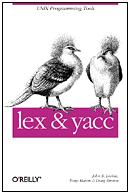
lex & yacc, 2nd edition
Tony Mason, John Levine, Doug Brown
ISBN: 1-565-92000-7
- flex manual , lex compliant scanner provided by the Free Software Foundation
- bison manual , yacc compliant parser provided by the Free Software Foundation
The publisher, O'Reilly and Associates This book shows programmers how to use two UNIX utilities, lex and yacc, in program development. lex and yacc are tools that help programmers build compilers and interpreters, but they also have a wider range of applications. The second edition contains completely revised tutorial sections for novice users and reference sections for advanced users. This edition is twice the size of the first and has an expanded index. The following material has been added: Each utility is explained in a chapter that covers basic usage and simple, stand-alone applications How to implement a full SQL grammar, with full sample code Major MS-DOS and UNIX versions of lex and yacc are explored in-depth, including AT&T lex and yacc, Berkeley yacc, Berkeley/GNU Flex, GNU Bison, MKS lex and yacc, and Abraxas PCYACC
Book Description This book shows you how to use two Unix utilities, lex andyacc, in program development. These tools help programmers build compilers and interpreters, but they also have a wider range of applications. You'll find tutorial sections for novice users, reference sections for advanced users, and a detailed index. Each utility is explained in a chapter that covers basic usage and simple, stand-alone applications. You'll learn how to implement a full SQL grammar, with full sample code. Major MS-DOS and Unix versions of lex and yacc are explored in depth. Also covers Bison and Flex.
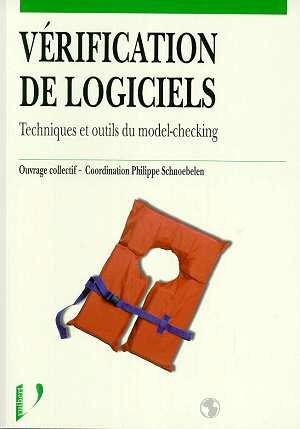
Vérification de Logiciels, Techniques et outils du model-checking
Ouvrage collectif, coordinateur Philippe Schnoebelen
ISBN: 2-7117-8646-3
La validation et la vérification des logiciels sont aujourd'hui des enjeux majeurs, tant industriels qu'économiques ; de plus en plus, la maîtrise de ces aspects influe directement sur la réussite de l'entreprise.Différentes techniques vérifient formellement tout ou partie de logiciels critiques dont il faut impérativement garantir la correction. Cet ouvrage est consacré à l'une des techniques les plus utilisées et les plus efficaces, le model-checking. Le model-checking a permis de découvrir et de mieux circonscrire des erreurs au sein d'applications industrielles (protocole de contrôle audio Bang et Olufsen, supervision de fabrication distribuée Renault, téléphonie cellulaire Motorola).L'usage du model-checking connaît donc un réel essor, notamment dans des domaines d'applications tels que:
- le contrôle de bus informatiques, les protocoles de communication
- la commutation téléphonique
- les systèmes de contrôle-commande en automatique
- les circuits intégrés
Divisé en trois parties, cet ouvrage propose, dans un premier temps, des explications concernant les principes fondamentaux de cette technique (modélisation par automates finis, produit synchronisé d'automates, logique temporelle, algorithmes de model-checking, model-checking symbolique, systèmes temporisés). La deuxième partie est, elle, consacrée à des questions pratiques liées à l'écriture des propriétés de correction et aux approches permettant de les vérifier.Enfin, plusieurs outils de model-checking sont présentés en fin de volume. Rédigé par une équipe de spécialistes, ce guide en langue française est le seul ouvrage disponible traitant du model-checking. Il intéressera tant les étudiants en second et troisième cycles d'informatique et d'automatique que les élèves des écoles d'ingénieurs.
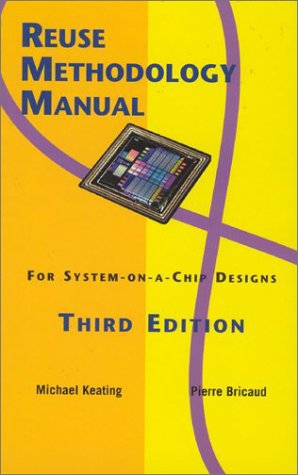
Reuse Methodology Manual for System-On-A-Chip Designs
Michael Keating, Pierre Bricaud
ISBN: 0-7923-8558-6, 1-4020-7141-8
Reuse Methodology Manual for System-on-a-Chip Designs, Third Edition outlines a set of best practices for creating reusable designs for use in an SoC design methodology. These practices are based on the authors' experience in developing reusable designs, as well as the experience of design teams in many companies around the world. Silicon and tool technologies move so quickly that many of the details of design-for-reuse will undoubtedly continue to evolve over time. But the fundamental aspects of the methodology described in this book have become widely adopted and are likely to form the foundation of chip design for some time to come.
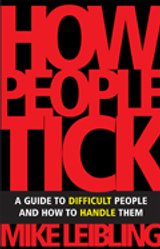
How People Tick: A Guide to Difficult People and How to Handle Them
Mike Leibling
ISBN: 0-7494-4362-6, 2-8434-3487-4
When dealing with difficult people, it is often just one aspect of their behaviour that is particularly challenging. But that single characteristic can be very problematic!
How People Tick is a practical guide to every type of difficult person and how best to handle them. Each situation is described, how it happens is analysed, and then strategies for dealing with the problem successfully are suggested. Disruptive behaviour patterns can be addressed once and for all, instead of having to handle one-off 'difficult' events, time and time again.
Absolutely invaluable to everybody, How People Tick is full of tried and tested tips for handling 'difficult' people in 'difficult' situations, based on a real understanding of their behaviour. It is for anyone who finds people bewildering or just plain difficult, and yet still wants to understand them, work with them and live with them.